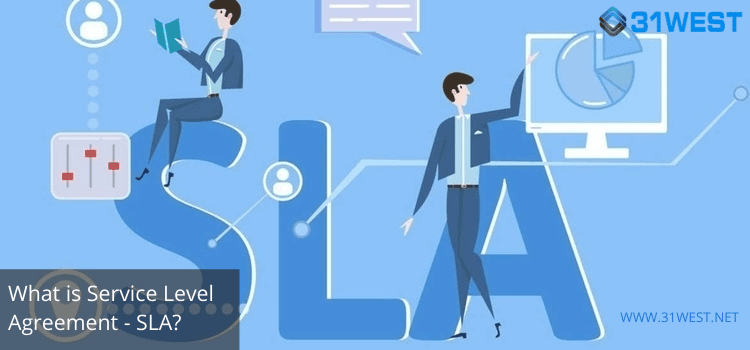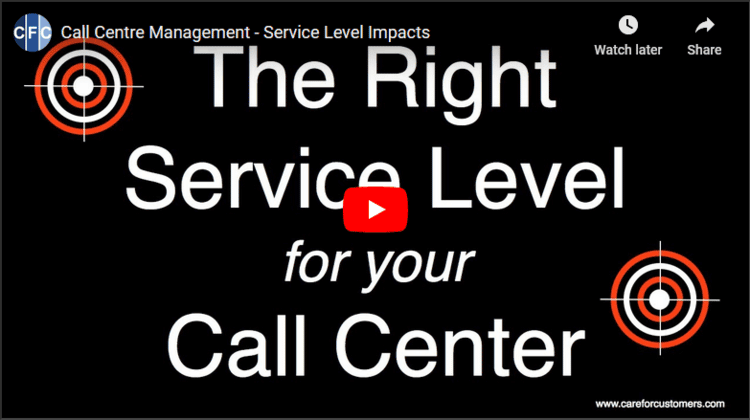SLA Definition:
What is an SLA - Service Level Agreement?
SLA stands for Service Level Agreement. It is a legally binding agreement between a business & its service provider. It includes a list of services offered by the provider, along with inclusions, exclusions & exceptions. It also includes KPIs (Key Performance Indicators) to measure & penalties applicable when service levels are not met. It’s an integral part of any contract & must be carefully drafted & agreed to by both vendors and partners.
Without a legally binding document your business & end-users, who depends on multiple service providers, maybe seriously compromised. Let’s understand this with an example.
A Pizza delivery company promises delivery within 30 min or a money-back guarantee. To successfully deliver each order within 30 minutes, the outlet must ensure enough stocks of dough, vegetables, sauces, herbs, boxes, etc. For this, the suppliers must be able to replenish the stocks quickly. The management decides to sign SLA agreements with all its suppliers. It will have terms for delivery schedules for business days and holidays, minimum order quantity, advance notices, weekly or monthly forecasting of purchases, deviation permitted, compensation for late delivery, etc.
With such a dossier in place, the Pizza company & its suppliers can better manage their business knowing well in advance of what is expected from them.
The most common reason for any project’s failure is because expectations & deliverables were not set correctly. When that happens, costs escalate, services are delayed or unpredictable and quality suffers. Therefore, from the very start a healthy SLA, which is fair to both parties can serve as a strong backbone throughout the engagement. For any engagement to be successful, it is important to have both parties in complete sync.
In addition to creating that important set of expectations and setting those ground rules, it can serve to identify responsibilities, facilitate communications to ensure a streamlined workflow, and reduce potential conflicts.
What are the different types of Service Level Agreements?
Let’s look at some commonly used formats in the industry today.
-
Services Based
It is created by a business for common services offered to all its customers. A classic example is the one offered by an ISP to all its customers. It may contain a guaranteed 99.9% uptime, issue resolution within 30 minutes, minimum upload or download speed, etc.
-
Customer-Based
It is created by a business for a specific customer that covers multiple services. A classic example of Customer-based SLA is when a large business signs up with a telecom company for multiple services. It may contain a guaranteed 99.9% uptime, on-site engineers, scale-up & scale down within a specific time, etc.
-
Multi-level
It is created by a business for a large customer covering multiple services, multiple departments, multiple geographies, etc. Multi-level SLAs are complex documents.
Why is Service Level Agreement important in business?
Yes, service level agreements are an important part of any contract. It lays a common ground for both parties, the provider & the receiver (the business or customer) to clearly define metrics, responsibilities, expectations, and deliverables, best practices thereby minimizing conflicts & ensuring a long-term profitable relationship.
Service providers need SLAs to help them manage their services for various severity levels. Service providers should also list circumstances under which they are not liable for outages or below-average performance.
A business needs an SLA as it describes what to expect from the provider thereby helping them manage & run their business smoothly ensuring unhindered growth. Without an SLA, it is ambiguous what will happen if one of the partners does not deliver to the expectations of the other.
Let’s look at this with an example.
Consider that an IT Services provider which promises to resolve all issues within 30 min of being reported. Without an SLA which clearly mentions resolution time, they can claim that they never promised to resolve issues within 30 min. It is also possible that the client may demand issues to be resolved in 10 minutes. When such terms are clearly documented, both parties are aware of what to deliver & expect respectively. If the required commitments are not met, both parties are aware of the compensation as well.
It’s important to mention here that businesses must be practical and not overambitious when drafting such SLAs. Abiding by a stringent SLA is expensive & a weak one will have a negative impact on service levels. It’s important to have neutral and practical terms acceptable to both parties.
What should be included in service level agreements?

An SLA should include all common components of any legal agreement. List of parties, start and end date, inclusions, exclusions, non-performance penalties, geographies & departments supported, the type of end users supported (internal employees or customers), remedial penalties for not meeting the terms, rewards or bonuses for overachievement, indemnities for both parties, anything else which is specific to the engagement, etc.
A good SLA with all the above components lays a strong foundation for a healthy and long terms relationship between two businesses.
What are the key components of a good SLA?
A good SLA should include all possible business scenarios and expectations for each of them from both parties. Let’s look at some of the relevant components.
-
Nature of Service:
A comprehensive Service Level Agreement must carry a detailed description of all services offered by the provider to the business. These should be divided into categories & sub-categories. If some services are specific to a department, then it should be mentioned. Hours of operations & resolution times are important components for any outsourced IT Service desk provider, and these should be explicitly mentioned leaving no scope for ambiguity. Both vendors and businesses must also mention application & license ownership to steer clear of any conflicts.
-
Key Performance Indicators (KPI):
An important aspect of any SLA is how the provider’s performance is measured. It should clearly mention the KPIs for the evaluation of service levels. Some KPIs are: Turn Around Time (TAT), First Contact Resolution (FCR), Closure Rate (CR), Number of cases handled, etc.
-
Risk Management:
Risks to individual processes & risk ownership must be clearly defined in the SLA.
-
Disaster Recovery:
Make a note of disaster recovery measures that each party is liable for & the cost involved in each of such situations.
-
Exclusions:
This is another very important component. Both parties must agree on all the exclusions. Exclusion of services, geographies, days, times, environmental conditions, etc.
-
Penalties:
What penalties should be charged if the vendor fails to meet the KPIs? Situations that can be considered as exceptions must be clearly identified. This is an important clause and the most common cause of conflicts; hence your document must be very explicit with this clause.
-
Reporting:
Reporting is a time-consuming process and there is a cost associated with it. Clearly mention the type of reports & frequency of submissions of each of these reports. It should also mention the cost of additional reporting which may be demanded by the client from time to time.
When deciding what metrics to measure, it’s important that the metrics are within the service provider’s control. If the service provider cannot control the parameters affecting the metrics. then it is unfair to hold him responsible for the same.
Pro-tip 1: Aim for automatic reporting of KPIs. This reduces human involvement; the associated man-hour cost & accuracy is unquestioned.
Pro-tip 2: Specify a baseline for the KPIs which are reasonable. Leave some scope for negotiation during the renewal of contract.
Who prepares a Service Level Agreement?
Most established service providers will already have standard SLAs reflecting different service levels and pricing. They are drafted based on the following factors:
- ✓ Prevailing industry standards
- ✓ Client’s common expectations
- ✓ Internal capabilities
- ✓ Competition
- ✓ Pricing
When drafting service level agreements, the typical flow of events are as follows:
- The service provider sends draft SLA to client
- The client reviews the KPI, terms & conditions, deliverables, penalty clauses, etc.
- The client makes the required changes and sends it back.
- Service provider reviews the revised terms, makes appropriate recommendations & proposes a change in pricing if any.
- The client reviews the revised terms & pricing changes if any.
This process continues until both parties come to a common agreement - Thereafter, both parties send the draft copy to their legal teams for approval.
- Upon approval from legal teams, both parties sign the SLA.
This sequence may vary based on the industry and business.
Pro-tip: When sharing an RFP, the client should clearly define the expected service levels. This will help filter out providers who are short on capabilities, for example, multilingual staff or 24/7 coverage. Disclosing minimum required service levels upfront helps save time & effort for both parties.
References to some good SLA templates are as below.
What are the different types of SLA Violation?
There are multiple types of violations that come into play when deciding on the amount of penalty. Let’s looks at some of the common types of violation or underperformance in the service industry.
Nature of Violation
Based on the client’s industry, the type of service provided & demographic of the end user, both parties can agree on the nature of violations to be considered for compensation.
Examples of nature of violations: Non-delivery, delay in delivery, incorrect service delivered.
Extent of Violation
Based on the client’s industry & the type of service provided, both parties can agree on the extent of underperformance which will be considered for a penalty.
Example of the extent of violations: KPI: All issues must be resolved within 3 hours. Delay by 20 minutes is acceptable. Subsequent, every 30 min of delay will attract a $XX penalty. A delay exceeding 5 hours will be considered as non-delivery of service and will attract a penalty of $YY.
Frequency of Violation
Based on the client’s industry & the type of service provided, both parties can agree on the frequency of violations which will be considered for penalty.
Example of the frequency of violations: Service outage once per month, not exceeding 5 minutes is acceptable. Outage up to 3 times a month not exceeding 5 minutes will attract a $xx penalty. Outage up to 6 times a month not exceeding 5 minutes will attract $yy penalty and so forth.
What are Penalties in a Service Level Agreement?
As a service provider you may want to avoid discussing penalties or explicitly including them in the SLA. Contrary to the common fear associated with penalties, you may be surprised to learn that penalties greatly help in retaining clients during the term of the contract and on renewal.
Without penalties, the customer feels helpless when terms of SLA are not met. Let’s consider this scenario.
A client wants all service requests to be resolved within 3 hours of being reported. What if it takes more than 3 hours to resolve most of the cases? In such a situation, the 3-hour resolution clause seems meaningless. This frustrates the client and prompts him to look for another vendor who can meet his expectations. Now, if the SLA has a penalty cause, the client knows that he is being compensated for such delays.
With clearly defined penalties the customer feels adequately compensated & the dissatisfaction is contained. Compensation also becomes a vital KPI for the vendor to measure the capability & productivity of its team. This helps them improve service delivery, retain existing clients, and win new references.
What are the types of SLA Penalties?

There are multiple types of penalty clauses in an SLA based on the industry and business. Let’s look at the 2 types of penalties commonly followed by all industries. You may choose to include either of them or a combination based on the mutual agreement by both parties.
Financial Penalty:
This is the simplest form of penalty where the outsourced party pays a specific amount for each violation or a bunch of violations. The amount of penalty may vary based on the type of violation and/or the extent of the violation and/or the frequency of the violation. This may be adjusted in future payments. In some cases, clients prefer to receive the penalty amount separately for ease of financial accounting or taxation purposes.
Service Credit:
This is another form of penalty which involves compensation in the form of service credits or extension in service. For example, if the service provider falls short of the man-hours serviced in a month. The shortfall is compensated in subsequent months. This is commonly seen in software development, application maintenance, software or hardware testing services, etc.
Whatever the form of penalty, it should be explicitly mentioned in the service level agreement along with exceptions leaving no scope for dispute.
It is important to note that penalties are also known to cause disputes between the parties. Penalties and exceptions get complex when working on large & complex projects. The SLA must include clear guidelines on compensations for not meeting the KPIs or breach in terms of service.
While the client will always lean towards higher compensation, it is important for both parties to set up fair dollars for various shortfalls in service delivery like downtimes, overshooting TATs, etc. It is preferred to cap the penalties and compensation to avoid big losses.
This section should also clearly mention exclusions, the most common being the inability to deliver services due to factors outside the control of the provider, like a natural calamity.
Pro-tip: It’s a common industry practice for a company to pass on a portion of the penalty to the service delivery team. This prevents the service delivery team from slacking & benefiting both parties.
What is an Indemnity Clause in a Service Level Agreement?
Your SLA is incomplete without an indemnity clause. Before we discuss further it is important to understand what it means and its implications.
Meaning: To indemnify someone against something bad happening means to promise to protect them, especially financially, if it happens.
Reference: https://en.wikipedia.org/wiki/Service-level_agreement
With reference to a service level agreements, both parties must always indemnify each other, financially & legally against non-discharge of obligations by the other party.
Here are a few examples to explain this.
Example 1: The service provider will indemnify the client against any legal or financial liabilities arising out of non-compliance of statutory HR policies. Scenario: Let’s say the service provider’s employee meets with an accident while providing services to the client. As the employee is on the vendor’s payroll it’s their responsibility to have this covered with an insurance policy. If the vendor fails to take an insurance cover, then the client will not be held liable in any way.
Example 2: It’s the client’s responsibility to procure and renew software licenses from time to time. If the support team is asked to install a software that is unlicensed at the time of installation or thereafter, the legal liability will solely be on the client. The client indemnifies the service provider and its employees against any legal action for installing and maintaining an unlicensed software.
Both parties must adequately safeguard each other against any breach of law of land due to the fault of the other party.
Do I need Performance Bonus?
It’s a good practice to have performance bonuses in service level agreements. It helps to incentivize the service provider & their team. This helps in 2 ways:
- ✓ It motivates the vendor to exceed terms of SLA which results in financial gain.
- ✓ It provides an opportunity for the vendor to offset penalties. Bonuses are always a good way to keep the team motivated.
Concluding Remarks
Well drafted service level agreements are fundamental building blocks for a sustainable relationship between the service provider and the customer. SLAs avoid conflicts and disputes, bringing in accountability & transparency. An SLA greatly contributes to the smooth functioning of the business which results in happy customers and growth.








